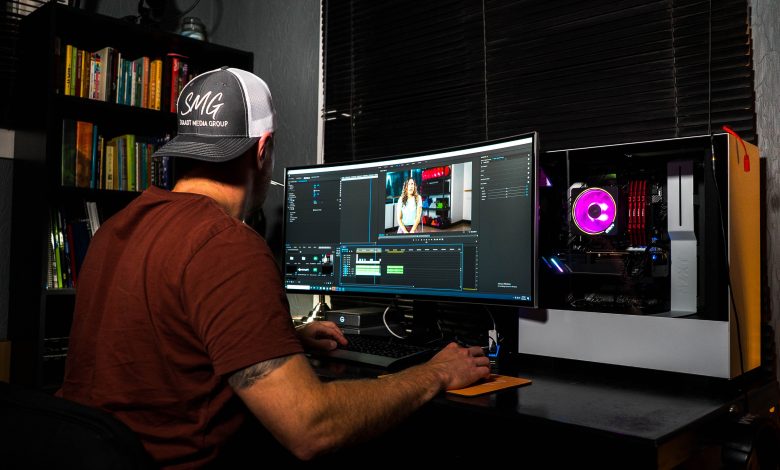Live Action vs. Animation: Pros and Cons for Your Project

When starting a creative project, one of the important choices is whether to use live-action or animation, whether for a movie, commercial, or promotional video. Understanding the pros and cons of each media will enable you to choose one that best suits the objectives of your project. This article will examine the live-action vs. animation pros and cons.
What is Exactly an Explainer Video?
An explainer video is a short, succinct, and exciting film that tries to clearly and simply explain a topic, product, or service. Businesses, organizations, and people frequently utilize explainer movies to market their goods and services or to explain complicated concepts. They may be found in presentations, websites, social media, and advertising efforts.
A live-action explainer video is a sort of video material that combines real people, real settings, and natural effects to clearly and entertainingly explain a topic, product, or service. Live-action explainer videos present real-world events and illustrate how a particular concept or solution may be used, unlike animated explainer videos, which depend on graphics or computer-generated visuals.
Live-action explainer videos provide real-world situations with the realism and relatability they need to be effective. They may successfully illustrate real-world applications and establish a genuine connection with the audience. However, when considering whether to employ a live-action technique for your explainer film, you should consider production complexity, visual effects constraints, and target audience concerns.
Live Action Pros and Cons
Live action refers to filming actual events and people while using actors, sets, and practical effects to give the action a feeling of reality. The benefits and drawbacks of implementing live act in your project are as follows:
Pros:
- Authenticity: Live action does a fantastic job of depicting real-life situations and giving them a sincere air of reality. It may portray human emotions and interactions well, enabling the audience to empathize strongly with the topic.
- Emotional connection: The audience is more profoundly affected emotionally when genuine performers are present because they can communicate emotions more effectively through their voice, body language, and facial expressions. This may be especially useful for productions that significantly rely on engaging performances or character development.
- Cinematic aesthetics: Live action frequently uses realistic settings, practical effects, and elaborate set designs to provide amazing sights. Real-world components may be captured to improve the cinematic experience and produce an aesthetically appealing product.
- Cultural acceptance: Since live-action is a well-liked and accepted medium, it is simpler to appeal to a broader audience. It has a lengthy history in cinema and television and is well embedded in popular culture, which makes it appealing to viewers who may be more accustomed to or at ease with this format.
Cons:
- Logistics and price: The cost of producing live-action films can be high since it takes money to find locations, hire performers, and handle technological issues. Additionally, managing a big staff and juggling schedules may be difficult and time-consuming.
- Visual imagination restrictions: Live action is limited to what is physically possible or feasible for filming. Implementing imaginative concepts, including fanciful or otherworldly components, which may demand extensive visual effects or be challenging to replicate physically, might be hampered by this constraint.
- Aging and continuity: Live-action productions may encounter difficulties due to actors’ aging, availability, and physical changes. It may be challenging to maintain consistency in sequels or long-term projects; it calls for careful preparation and may affect the story’s overall coherence.
- Replicating difficult or hazardous scenarios: Replicating complex or dangerous scenarios in live action can be expensive, unsafe, or not practicable. Additional safety precautions or visual effects can be necessary to obtain the intended result, thus raising the project’s cost and level of difficulty.
Animation Pros and Cons
Animation entails the production of images using many methods, including drawings and computer-generated imagery (CGI). It allows for free artistic expression and the portrayal of fantastical settings, people, and ideas. The benefits and drawbacks of incorporating animation in your project are as follows:
Pros:
- Creative freedom: Animation offers countless options that make it feasible to visualize concepts that could be difficult or impossible to realize in live action. It is perfect for projects with fanciful or abstract components since it enables the development of distinctive and aesthetically stunning material.
- Control over visuals: Animation provides total control over the project’s visual aesthetic, including its visual tone, colors, lighting, and lighting effects. This control enables the development of a unified and unique visual identity that perfectly matches the project’s vision and goals.
- Timeless appeal: Animation is not constrained by real-world aspects that could become old or aesthetically unpleasant with time. Therefore, it can have a timeless appeal. Animation is a good choice for initiatives that seek to transcend current trends or have a lasting impact because of this characteristic.
- Flexibility and scalability: Animation is adaptable and can be quickly changed, scaled, and adjusted to accommodate changes and enhancements long after the initial creation. Additionally, an animation may be converted to various mediums, including TV shows, movies, web material, and interactive media, giving your project flexibility and adaptability.
Cons:
- Perceived as for children: Animation is frequently linked with children’s material, which may cause misunderstandings regarding your project’s intended target demographic. This notion could prevent your material from reaching or being well-received, especially if you are trying to attract an older or more diverse audience.
- Lack of realism: Animation might not have the same realism or personal connection as live-action while being aesthetically beautiful. Complex human emotions and nuanced performances can be challenging to recreate, which may influence how well characters are developed or how emotionally engaging they are.
- Production time and costs: Because of the intricate artwork, the frame-by-frame production method, and the demand for competent animators, animation projects often demand considerable time and financial commitment. Budgeting and scheduling for animation might be more complex than for live-action videos.
- Technical know-how: Producing high-quality animation requires a talented team with knowledge in various disciplines, including character design, rigging, 3D modeling, and animation software. This knowledge might hinder specific projects, necessitating cooperation with knowledgeable individuals or studios.
The decision between live action and animation ultimately comes down to your project’s objectives, financial constraints, target market, and artistic vision. Animation gives creative freedom, visual control, and flexibility, whereas live action delivers authenticity, emotional connection, and cinematic aesthetics. Making an informed choice that meets your project’s needs will require you to be aware of the advantages and disadvantages of each media. Examining alternatives might offer unique chances to communicate with and engage your audience.




